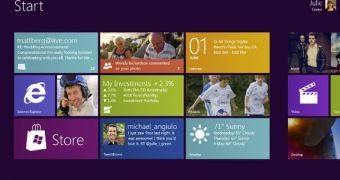Due later this year, Microsoft’s Windows 8 platform is expected to offer a new approach to the manner in which applications make use of device’s features, including the battery.
One of the main focuses when developing Windows 8 was on the power efficiency of applications, so that users could benefit from longer battery life on their devices.
Microsoft has been working on ensuring that Windows 8 will benefit from a smartphone-like power mode on system-on-a-chip (SOC) hardware, one that was called Connected Standby.
However, there are other enhancements as well that Microsoft chose to pack the operating system with in an attempt to make it drain as less battery juice as possible at all times.
Since applications would drain power by making use of various device resources, including CPU, disk, memory, and more, the team behind Windows 8 thought of allowing apps to access these resources only when the user interacts with the device as well. The same applies to the OS.
Windows 8 will suspend inactive applications to save battery life, though this applies only to Metro applications. Basic OS functions such as copying files will not be affected.
At the same time, the development team decided to focus more on the applications that were on the foreground.
The large majority of Metro applications will obey this rule, it seems: when the app is not on the screen and the screen is off, the app won’t impact battery life.
“There’s a new way of thinking about how and when code takes into account modern hardware capabilities, networking demands, form factors, and reliability/security/privacy,” Sharif Farag and Ben Srour, lead program managers on the Fundamentals and User Experience teams, respectively, note in a blog post.
“There are going to be some exceptions (e.g. background email syncing, desktop tools), but for the majority of cases, we expect the app to do most of its work while you are actively interacting with it.”
When the app is in the background, it won’t be completely suspended, but it won’t have unlimited access to the device’s resources either. There will be a set of common background capabilities (such as copying files) that an app will be able to access.
Apps in Windows 8 will either be running in the foreground, active, or will be in the background, where they can be suspended or can perform some defined activity.
Users should get a taste of the first Metro apps sometime in late February, when Microsoft makes Windows 8 Consumer Preview and Windows Store available for the general public.
In the meantime, you can download the Windows 8 Developer Preview Build 8102 M3 from Softpedia via this link.

 14 DAY TRIAL //
14 DAY TRIAL //